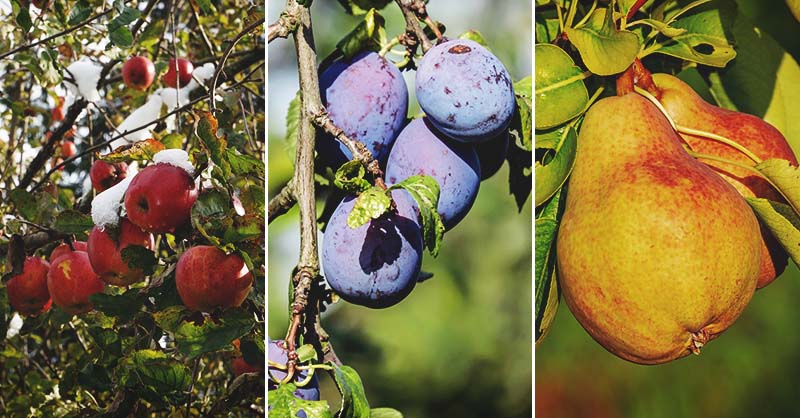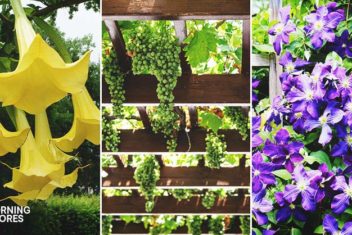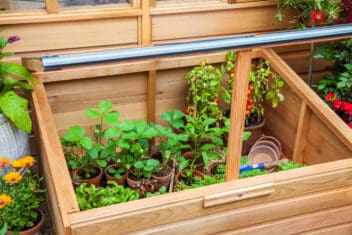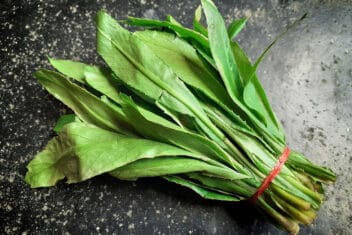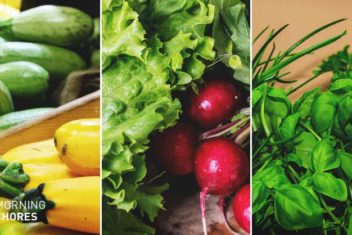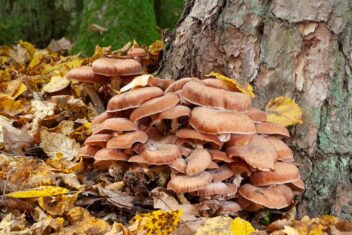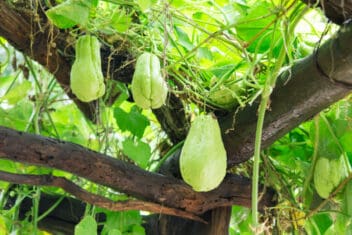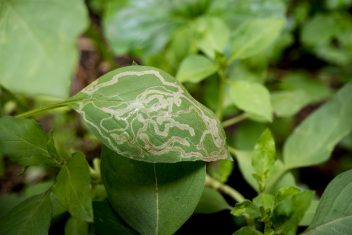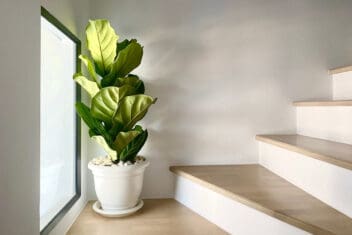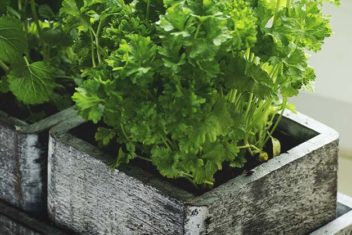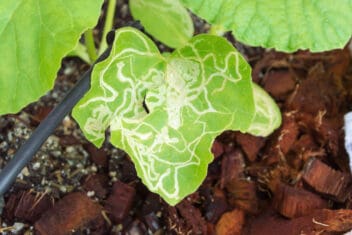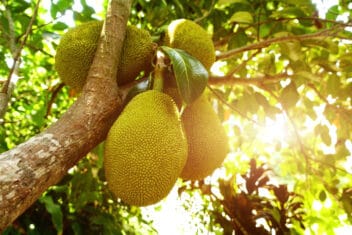Who doesn’t love the idea of a yard full of fruit? Going out into your backyard and eating an apple off of the tree is a simple, delicious pleasure that not everyone gets to enjoy. If you want to experience it for yourself, you need to find the right fruit tree for your growing zone.
Some varieties of fruit trees are hardier than others, being able to handle temperatures well into the negatives. Other trees, such as citrus trees, need a subtropical or warmer climate to grow fruits.
The key to success is choosing the right fruit tree for your growing zone. If you pick the wrong one, your tree may not die, but it won’t thrive. This guide will help you make the right choice so that you can be snacking on a sweet treat in no time.

What Are Hardiness Zones?
Before you purchase a fruit tree, make sure you understand your hardiness zone. Hardiness zones are set by the USDA, and they’re determined by the coldest temperatures in each region. It’s not determined by the average temperatures a region faces each winter; it’s the extreme cold or heat an area might reach.
Remember these suggestions are far from exhaustive! There are always interesting new varietals popping up and old classics waiting to be re-discovered, so keep an eye out at your local nursery.
Fruit Trees for Growing Zone 2
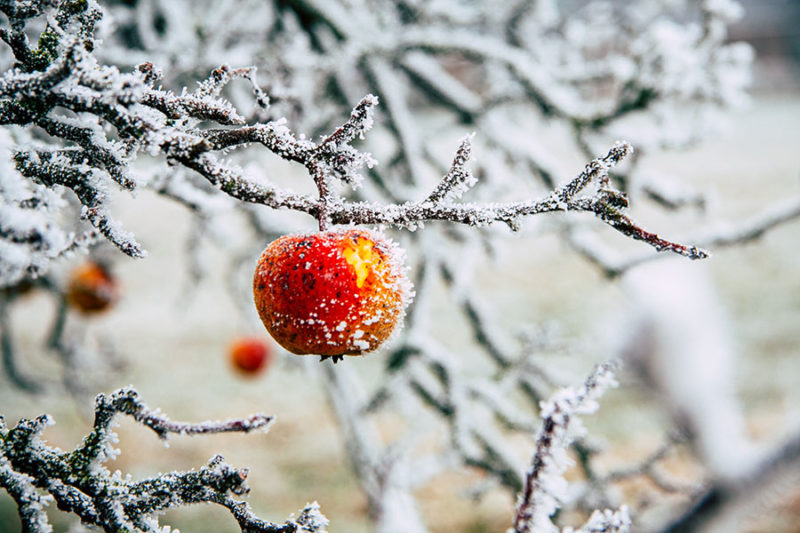
Zone 2 is the coldest growing zone that most fruit trees can handle, reaching temperatures as low as -50°F. Trees in these zones have to be extremely hardy to handle those temperatures.
Don’t expect to grow things such as citrus fruits in zone 2, unless you want to grow them in pots and bring them inside during the cold temperatures – which make up a large portion of the year. If so, you need to have a space set up for creating the right conditions inside of your home or heated greenhouse.
Apple Trees
Apples are the most common fruit tree to grow this far north. The University of Saskatchewan is always for grafting and developing a few newer varieties of trees that are hardy to – 50°F and even below that. Check out:
- Red Columnar Apple
- Alberta Buff Apple
- Prairie Sensation Apple
Pear Trees
Zone 2 can grow some pear trees as well. Most of these trees are the type that is harvested between August and September. Here are a few choices:
- Delicious Pear
- Beedle Pear
- Simone Pear
Plum Trees
Are you surprised to see plum trees on this list? A few plum trees are hardy up to -50°F, which is surprising for many people. In actuality, some plum trees are staples in these areas, like the Fofonoff Plum known as Homesteader.
A few other varieties are:
- Pembina Plum
- Patterson Pride Plum
Fruit Trees for Growing Zone 3
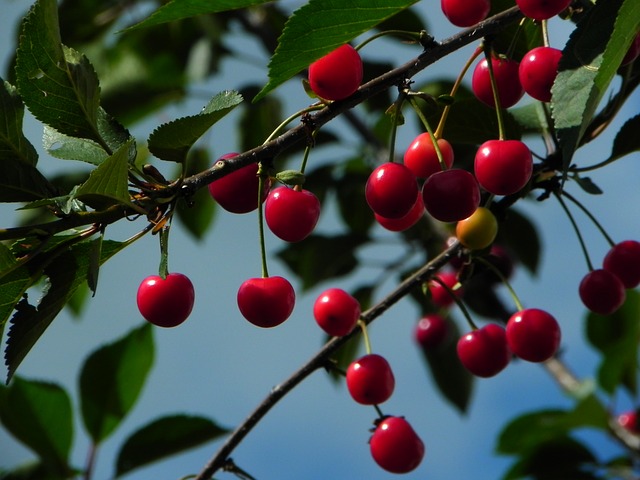
USDA zone 3 is particularly cold with plenty of snow. Fruit trees in this region need to be hardy, capable of handling winter temperatures as low as -40°F. As the regions get warmer, you have more options for fruit trees.
Apple Trees
Apple trees are often the first ones that people think of when selecting fruit trees. When choosing a variety, consider what you want to use your apples for, whether its juice, applesauce, baking, fresh eating, cider, or something else. Different varieties are better for different uses.
- Goodland Apple
- Norkent Apple
- Harcourt Apple
- Dutchess of Oldenberg
Cherry Trees
In zone 3, sour cherries are the most adaptable type. They flower later than sweet cherries so late frosts won’t damage them. Don’t worry; the name sour cherry refers to the type of tree. The fruit can still be sweet when fully ripened.
A few cherry trees for zone 3 include:
- Cupid Cherry
- Carmine Jewel Cherry
- Evans Cherry
Plum Trees
Plums are in the same family as cherries, and sometimes they need a tree in the same family for pollination purposes. Gardeners in zone 3 have a few choices, like:
- Brookgold Japanese Plum
- Waneta Plum
- Toka Plum
Pear rees
Finding pears that are hardy to zone 3 can be challenging. There aren’t tons for these climates, but there are a few. Check out:
- Early Gold Pear
- Golden Spice Pear
Fruit Trees for Growing Zone 4
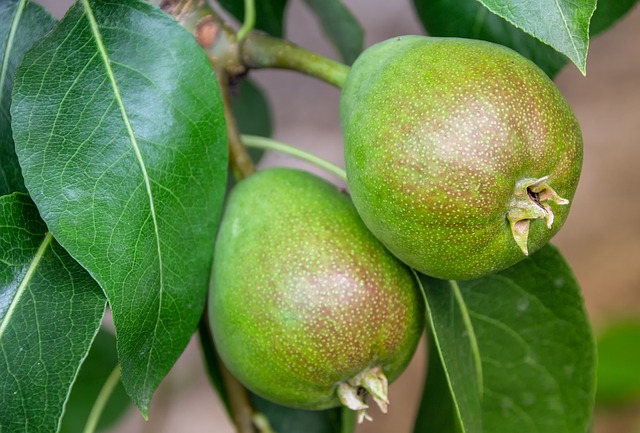
We’re starting to move more south, even though it’s still quite cold in zone 4 during the winter. Fruit trees in this area need to be able to handle lower temperatures, but nothing as severe as zones 2 and 3. Luckily, there are plenty of choices for zone 4.
Apple Trees
I love apple trees because they’re some of the hardiest trees available. Some of these options are so hardy they could survive in zone 3, but they’ll be happier in this region.
- Honeygold
- Lodi
- Northern Spy
- Empire
- Red Rome
- Spartan
Pear Trees
More and more options for pear trees are becoming available for zone 4. I like European pears because they’re the hardiest choices. Consider a few varieties, such as:
- Patten Pear
- Flemish Beauty Pear
- Luscious Pear
Plum Trees
American plum trees are great for cold climates because European plum cultivars rarely survive below zone 5. Here are some varieties to consider for zone 4.
- Waneta
- Superior Plum
- Alderman Pum
Cherries Trees
It’s still difficult to find sweet cherries at temperatures this cold. They don’t like the chill, but you could pick Rainier, which is the hardiest sweet cherry tree available. Instead, consider sour cherries for zone 4. They’re perfect for cherry jam and cherry pies.
- Sweet Pie
- Surefire Cherry
- North Star Cherry
- Meteor Cherry
Fruit Trees for Growing Zone 5
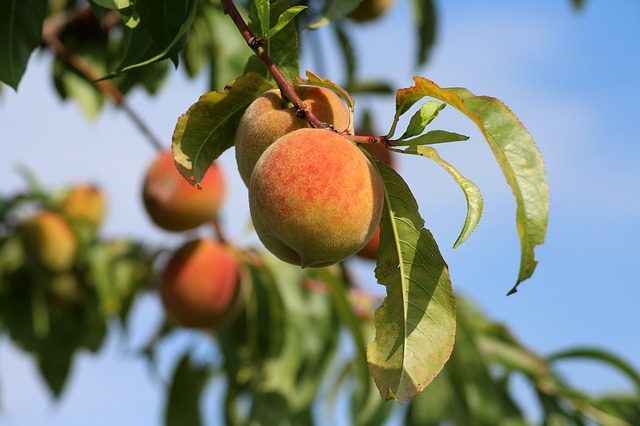
Zone 5 still has cold winters, but they don’t tend to be as extreme. You can grow fruit trees that are happy in colder climates here. As we move towards the south, the options for fruit trees start to increase.
Apple Trees
Now, the option for apple trees is really opening. There are so many options for this zone! Here’s a small sampling:
- Pink Lady
- Honeycrisp
- Ashmead’s Kernel
Pear Trees
You can find plenty of awesome pear trees for zone 5. You want cold hardy and delicious cultivars that are disease resistant.
- Harrow Delight
- Warren
Plum Trees
You have quite a selection to pick from when growing plum trees in zone 5. Some choices include:
- Emerald beauty
- Superior
Peach Trees
For the first time, we’ve added peach trees to the list! They grow well in zone 5, but they’re at risk of being damaged by late frosts. A few peach varieties you might want to grow to include:
- Snow Beauty
- White Lady
Fruit Trees for Growing Zone 6
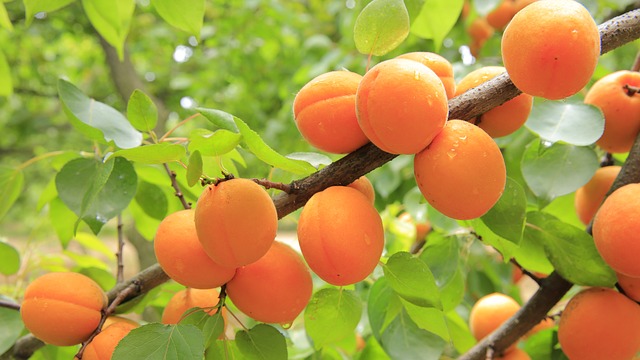
Picking a fruit tree for growing zone 6 is easier than zone 5. The winters aren’t as harsh, and the temperatures aren’t as cold, so you can grow more fruits here.
Apple Trees
We still moving through the list of apple trees to grow. Some ideal zone 6 options include:
- Honeycrisp
- Barlett
- McIntosh
- Gala
Pear Trees
Zone 6 means that, for the first time, you can grow Asian pear trees rather than European or American trees. Some of the best Asian pear trees include:
- Kosui
- Atago
- Seuri
Apricot Trees
We’re adding a new possibility for this zone – apricot trees. They aren’t a huge fan of the cold weather, and who can blame them? A few options for apricot trees include:
- Chinese Sweet Pit
- Sungold
- Moongold
Plum Trees
You can grow European varieties of plums in zone 6, and you also can grow Japanese plum trees as well.
- Damson
- Stanley
- Santa Rosa
- Premier
Cherry Trees
Most cherry trees grow well in zone 6, so you have a big selection. Some of the best fresh cherry trees include:
- Benton
- Stella
- Sweetheart
- Richmond
Peach Trees
Growing peach trees in zone 6 is easier because you have a smaller chance of extreme frosts, which peaches don’t like. A few varieties include:
- Reliance
- Redhaven
- Elberta
- Candor
Fruit Trees for Growing Zone 7
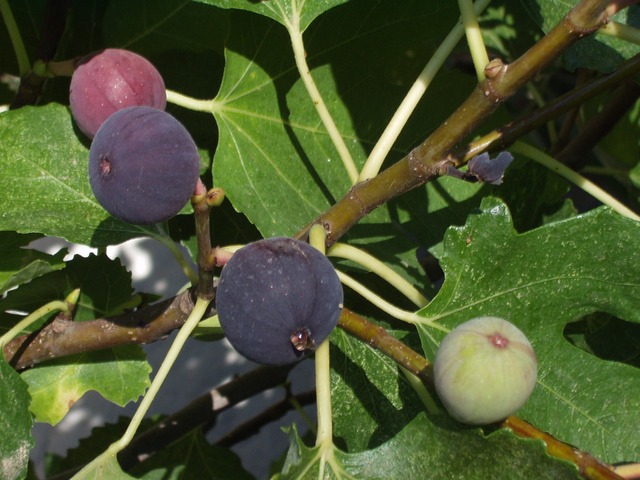
Mild winters in zone 7 let gardeners grow a larger amount of fruit tree varieties that aren’t available in other areas. At the same time, it’s not so far south that you can’t grow some of the staple northern fruits that dislike extreme heat.
In zone 7, you can grow all of the fruit trees that we have listed above. So, feel free to plant some apple, pear, plums, peaches, cherries, and apricots. Additionally, there are a few new fruit tree options for your backyard orchard.
Fig Trees
Fig trees don’t like frost, so you might want to consider growing in a container in case you have a late frost in your area. A few fig varieties to try include:
- Marseille
- Greenish
- Turkey
- Celeste
Nectarine Trees
Do you love nectarines? Don’t purchase them at the store! Instead, grow a few yourself, such as:
- Carolina Red
- Fantasia
- Red Gold
- Sunglo
Persimmon Trees
Not everyone loves persimmons, but if you do, zone 7 is the first zone that you can grow them without trouble.
- Fuyu
- Jiro
- Hanagosho
Fruit Trees for Growing Zone 8

Living in zone 8 means you have a wide range of fruit trees. You can enjoy tons of homegrown, fresh fruits. We didn’t include any of the trees listed above because if it’s listed above, you can grow it in zone 8. That’s a ton of fruit trees!
Now, we’re going to look at some of the trees that don’t like to have any cold weather. Gardeners in zone 8 should be pretty excited; they can have an extensive backyard orchard.
Orange Trees
Zone 8 is the first one that gardeners can grow orange trees. Consider dwarf orange trees because you can grow them in patio pots and take them inside if it gets too cold. If you want to grow full-sized trees, you need cold hardy orange trees, like:
- Dwarf Calamondin
- Hamlin
- Ambersweet
Grapefruit Trees
Grapefruit trees are a bit trickier to grow. These trees lack cold hardiness, and they can take 10 years to produce fruit. If you’re in it for the long-haul, here are a few picks for zone 8.
- Marsha
- Redblush
- Star Ruby
- Ruby
Lemon Trees
Sometimes, zone 8 can be a bit chilly for lemon trees, so grow them in pots if you want to be safe. This lets you bring them inside if it gets a bit too cold outside. Dwarf varieties are best for this purpose.
- Meyer Lemon
Fruit Trees for Growing Zone 9

Zone 9 is subtropical, so your options for a fruit tree in this growing zone are pretty broad. Of course, you may have to contend with some intense heat and other problematic weather issues. While the range of fruits here might seem larger, extreme heat poses problems just like extreme cold.
Most of the trees listed above can be grown in zone 9, but you do need to determine if the temperatures are too hot. For example, a tree that is hardy to zone 3 might struggle with the extreme heat in zone 9. You’ll be better off if you look at varieties that grow well in zone 7 and 8 instead.
Zone 9 is still a bit too chilly for mangos and papayas, but there are some awesome tropical fruits that grow well in these areas.
Banana Trees
Bananas grow best in zone 10, but there are a few that grow in zone 9 well. Smaller, compact banana trees are better suited to zone 9 than the taller varieties because they need more consistent heat.
- Cavendish Banana
Tangerine Trees
In zone 9, you can grow tangerine trees, which are small, orange-tasting fruits that are more intense than oranges.
- Dancy
- Murcott
- Sunburst
Fruit Trees for Growing Zone 10 and 11
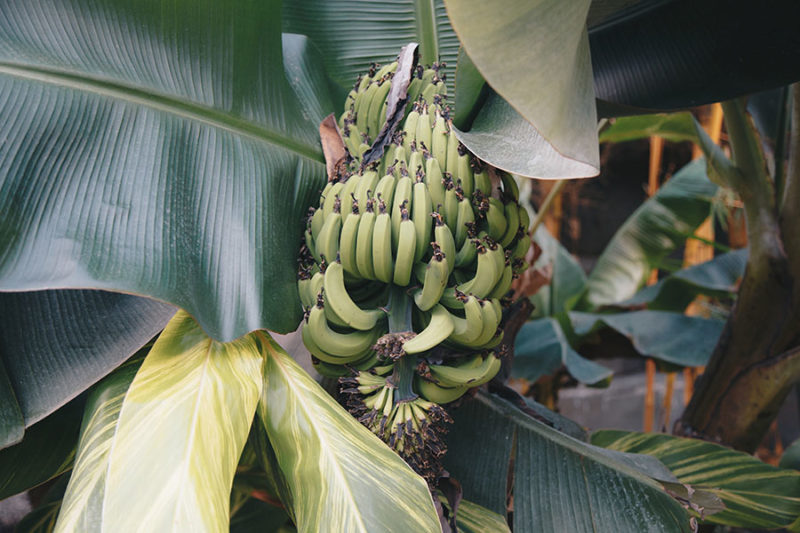
Growing zones 10 – 11 are fairly uncommon in the U.S., mainly appearing in Florida, California, Arizona, Hawaii, and Puerto Rico, though this is changing as the climate warms.
In zone 10, you can start to grow things like key limes, loquat, cold-hardy avocado, a wider variety of bananas, and all citrus fruits.
In zone 11, you have a wide selection of tropical fruit trees, including mangoes, sugar apples, kiwis, passion fruits, dragon fruits, starfruits, pineapple, jackfruit, and lychee.
Picking the Right Fruit Tree for Your Growing Zone
Picking the right fruit tree for your growing zone doesn’t need to be mystifying. All you have to know is your USDA hardiness zone. Then, take a look at what can be grown in your area by checking out plant catalogs, nurseries, and grower websites. Then, figure out what can survive and what will die if left outside.
Once you narrow it down, you can pick the best varieties out of the fruit that you want to grow. Look at the characteristics of each type and how quickly they harvest. Make sure to find out if they’re self-pollinating or if you need two or more of each tree for pollination purposes.
Remember that planting fruit trees is an investment in your future. Years from now, you’ll see the fruit – literally – from your planning and research into the right fruit tree for your growing zone.

